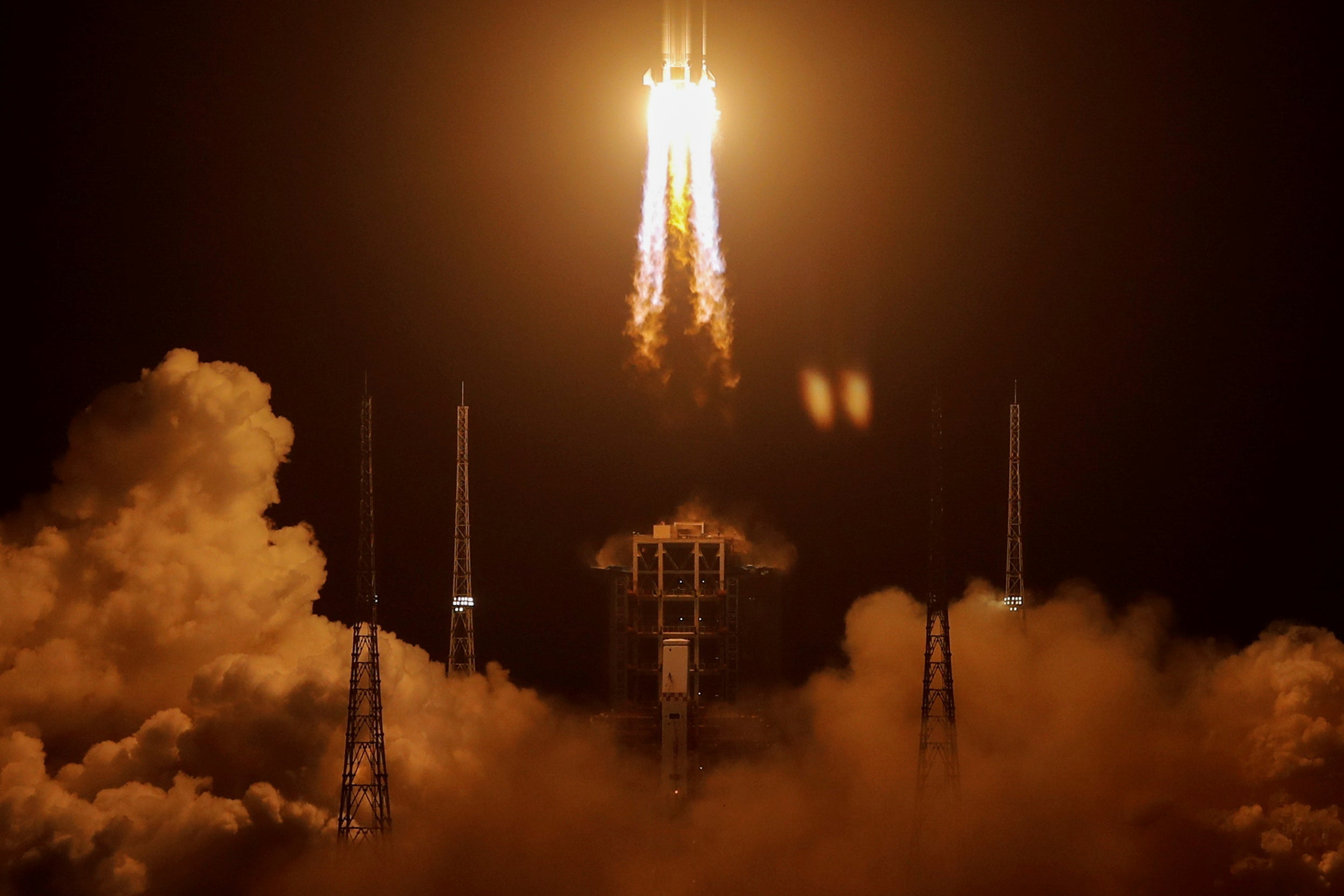China successfully launches first mission to retrieve rocks from Moon
If successful, the mission will be the first time a nation has retrieved Moon rocks in over 40 years

Your support helps us to tell the story
From reproductive rights to climate change to Big Tech, The Independent is on the ground when the story is developing. Whether it's investigating the financials of Elon Musk's pro-Trump PAC or producing our latest documentary, 'The A Word', which shines a light on the American women fighting for reproductive rights, we know how important it is to parse out the facts from the messaging.
At such a critical moment in US history, we need reporters on the ground. Your donation allows us to keep sending journalists to speak to both sides of the story.
The Independent is trusted by Americans across the entire political spectrum. And unlike many other quality news outlets, we choose not to lock Americans out of our reporting and analysis with paywalls. We believe quality journalism should be available to everyone, paid for by those who can afford it.
Your support makes all the difference.China successfully launched an unmanned spacecraft on a mission to explore part of the Moon early on Tuesday, in a bid to become only the third nation to collect rocks and debris from the lunar surface.
Named Chang’e 5, after the ancient Chinese Moon goddess, the four modules of the spacecraft blasted off atop a massive Long March-5Y rocket from the Wenchang Spacecraft Launch Site in the southern province of Hainan.
The ambitious mission intends to land the spacecraft in an area called Oceanus Procellarum and will seek to collect lunar material by drilling 7 feet into the surface with its drill and robotic arm, scooping about 2 kilograms of rocks and soil. The sample will then be transferred to what's called an ascender.
The materials will then be moved to the return capsule to be hauled back to Earth. The information the samples can provide could help scientists understand more about the Moon’s origins, formation and the solar system generally.
The spacecraft will reach the surface in about three days and will stay there for the duration of one lunar daytime, which is about 14 Earth days because it lacks the radioisotope heating units required to withstand the Moon's freezing nights.
If successful, China will only be the third country to bring back lunar samples, joining the United States and the former Soviet Union, and the first in over 40 years.
The mission also underlines China’s ambitions in space technology and its attempts to boost its space programme, with hopes of having a crewed space station of its own by 2022 and eventually sending humans to the Moon.
Chang'e 5 and future lunar missions aim to "provide better technical support for future scientific and exploration activities," Pei Zhaoyu, mission spokesperson and deputy director of the Chinese National Space Administration's Lunar Exploration and Space Engineering Center told reporters at a Monday briefing.
"Scientific needs and technical and economic conditions" would determine whether China decides to send a crewed mission to the Moon, said Mr Pei.
"I think future exploration activities on the Moon are most likely to be carried out in a human-machine combination," he said.
As part of its space endeavours, the country also successfully landed a spacecraft on the far side of the moon in 2019, becoming the first country to do so.
In July this year, China became one of three countries to have launched a mission to Mars, in a bid to search for signs of water on the red planet. The CNSA says the spacecraft Tianwen 1 is on course to arrive at Mars around February.
Additional reporting by agencies




Join our commenting forum
Join thought-provoking conversations, follow other Independent readers and see their replies
Comments